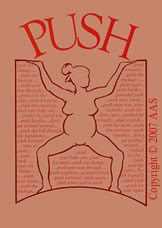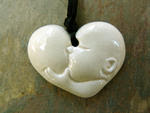- Look at all of the literature from around the world about where she is definitively known to be significantly safer. Research shows mother and baby are as safe, if not safest when birthing with trained midwives. The negligible difference between homebirth and hospital safety for babies could be easily remedied.
- Look at the summations of others regarding the Johnson and Daviss study (those without vested financial interests)
- Look at other studies particularly those done in Sweden, UK, and Netherlands, Australia, and New Zealand where infant and maternal death rates are the lowest in the world, and in states in the US where non-nurse midwifery is legal and socially acceptable -- Washington, Oregon, Florida, California, Arizona, and Texas.
- Talk to women who have given birth at home AND consider the reasons that things have gone wrong in both home and hospital birth.
A lot of issues arise around my work in prenatal and birth trauma healing – people feel hopeless without an awareness of how to mediate the experience. The same sort of risk exists for heralding the truth about midwifery care for women in states where it is not an option --- women feel helpless and powerless. A woman can get involved in midwifery support groups and in taking the question of safety of birth to her local politicians.
There is one very good reason for every woman, every community, and every state to begin to look at the research-based quality of midwifery care for childbirth. Home Land Security needs to address the need and provide for the need of pregnant and laboring, birthing women in the event of a catastrophic event of any cause. Hospitals could be destroyed, not fully functioning, quarantined, or overwhelmed with trauma patients. The lack of a plan for caring for it's pregnant and birthing women is an example of a hospital, community, and state's monumental lack of regard for the safety of birthing women and babies.
When the historical data shows that the countries that developed a non-medical, but collaborative midwifery, woman-focused model of maternity care and a STANDARD of care for that country, what is going on here in the US? How are some states perfectly legal where a large number of women give birth at home – California and Washington, while in others is considered “practicing medicine without a license.” Why is a birth center model illegal in IL, while it flourishes in other states?? Why may only Certified Nurse Midwives (CNM) practice under a doctor in IL while it is illegal for Direct Entry (DE) or Certified Professional Midwifery (CPM) professionals to practice? Why does a woman in those states have to birth her baby like women in pre-seventies had to secure an abortion? WHY does a woman have “the right to her body” so she can chose to abort a fetus; however, she has to give up her rights to her body and her baby’s care when she chooses to keep the pregnancy and give birth?
Having the right to her body in birth and making choices about her baby’s birth is a woman’s issue. It’s as big as getting The Vote.








No comments:
Post a Comment